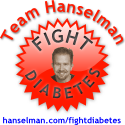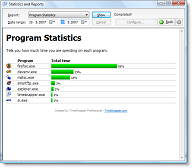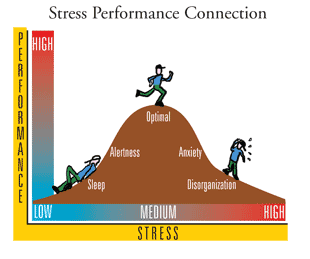Unfortunately, this time around we don't get any such luxury.
There's no secret website where talented copywriters have put together pithy product descriptions, witty taglines, catchy headings, all yours for the taking. There's no pre-written FAQ for your product, no ready to use helpfile.
You have to fall back on your own damn meager skills for this one.
Lucky you're qualified! You create applications, so we know you're creative. You write and refactor code, so we know you can write and edit. You use an IDE, so you can master a word processor.
Most importantly, years of developing software have taught you that one lesson, more important than any other (a lesson for marriage, for marketing, for being a decent brother, father, son, employee, boss, president, counsellor, priest, doctor, ... you name it, the big lesson, which lies at the heart of both good software and good writing... drum roll please!)
You know how to:
Put Yourself In The Other Guy's Shoes.
And of course it's a deceptively hard skill. Looks easy, but isn't.
There are books you can buy on the topic, expensive courses you can attend, just to learn this lesson. Marketing weasels will go on about it until you want to stab them with a pen. But software development drove this message home to you a long time back. Understanding that the "customer's" point of view is different to your own. Big thing to keep in mind. Don't forget that. Let that be your all-weather compass, and so on. You get the picture.
Start With A List
Your MicroISV is in need of a website. So where do we start?
First, we need a general plan for how we're going to write this website. So, first up I think we want to know what pages you intend to include.
After reading millions of webpages from thousands of ISV's (possible exaggeration right there), here's a bunch of likely candidates.
- Landing page / Front Page
- FAQ
- Help page
- What's new (aka release notes)
- screenshots
- tour
- Demonstration movies
- Comparison between your free and professional versions
- Comparison with competitors
- Testimonials
- Forums
- Blog
- Contact us
- Support
- Purchase
- Thank you for purchasing
- Sorry you quit purchasing half way through ;-)
- So you'd like a Refund
- Sign up for... something
- Privacy Statement
- About
Jaysus! That's a lot of pages! You'd better cut most of them out -- draw a line through every page you can.
Get it right down to just the pages you need for release day 1.
Maybe five pages.
Don't include any pages that are 'nice to haves' or pages that you can inlcude later.
And please, make this agreement with yourself: Your website will absolutely refuse to have any pages that say 'Coming Soon' -- or any synonyms of that phrase.
("Coming Soon" is just a lie. If only we, website authors, could admit it to ourselves.)
The List Is Small
It's a very small list. A minimum list of pages. Short. Nothing but the most urgent. Can we start writing yet? Not till we check our shoes...
Now's the time when we've got to put ourselves in the user's shoes.
This product isn't for us. It's for the user. It helps the user. It takes away their pain. It makes them happy. It does something that must be done.
And every page on your website is for the user too. It answers their question, guides them to the information they need, puts their mind at ease, entertains them, enthralls them -- whatever. It does something for them -- and if it doesn't, then don't write it. Cut that page out of your list right now.
The List Is Even Smaller
And it's time to write. We start of course with whatever page is most helpful to the user. Perhaps the landing page. And this is where you need courage.
It takes courage to write that first draft. You have to silence the nagging doubts. Appease the hyper-excessive rumination of your pre-frontal cortex.
The greatest advice out there is from someone called Anne Lamott who talks about the "Shitty First Draft".
"...the only way I can get anything written at all is to write really, really shitty first drafts.
"The first draft is the child's draft, where you let it all pour out and then let it romp all over the place, knowing that no one is going to see it and that you can shape it later...."
And the 'Shitty First Draft' school of writing is much more successful than the Gene Fowler approach:
"Writing is easy. All you do is stare at a blank sheet of paper until drops of blood form on your forehead."
So go away right now and crank out some awful Shitty First Draft of your most important page. No one has to see it. Maybe there's a good sentence or two in there -- you take the best and discard the rest, cutting and expanding from low quality material until you have a fairly coherent piece of raw copy.
So we started with Shitty and we've ended up at Raw.
In theory you can take your raw copy and have a friend review it -- but I don't recommend that idea (I used to, but no more).
Feedback is crucial -- but I've learnt that premature feedback is a waste of everybody's time.
My theory used to be: "why polish the bits that are going to be excluded anyway?" -- the old maxim:
"if a job's not worth doing then it's not worth doing properly."
But i no longer follow this belief.
Now I realise that if you get people to review your work when it's completely unpolished, then their feedback will focus on obvious things you already knew. (e.g. spelling mistakes, grammatical errors). This kind of feedback will get in the way of the more valuable, deeper feedback you're after: the sort of analysis that you can't do by yourself. So spend a little time polishing it up before handing it over.
Proofreading 101
The polish you can apply to your Raw draft is a form of "checklist" proof reading.
In the "checklist" technique you move through your text a number of times, looking for different things each time. Once you've used the 'checklist proof reading' technique on a few pieces of writing, you'll begin to perform it in less passes.
You may need to build up your own checklist. I'll provide one below -- but you could also consult the classics (for example, George Orwell wrote a very nice checklist).
Checklist proof reading:
- Fix your spelling. -- Commonly
Mispelled Misspelled Words
- Don't use the wrong word:
- Your, You're
- Their, They're, There
- To, Too
- "a lot" (not "alot")
- Its, It's
- Use Active words -- remove inactive crap.
- Remove excess verbiage
- Remove "-ly" words.
- If you're not certain of the grammar around a particular phrase, then switch the phrase out.
- Remove potentially offensive content
Once all these little steps are done, your work is ready to be reviewed.
If however, you weren't happy with the results -- there is another proof reading technique that gives far better insight into your writing. And this technique has only one step:
Read It. OUT. LOUD.
Reading outloud is a great way to expose dodgy writing for what it is. (Note to self: read my own stuff out loud a lot more in future.)
Hand It Over
If English is not your main language, then I advise getting your work reviewed by someone who has mastered English grammar.
And on the other hand, if English is your main language, and you've been speaking it and using it all your life, I still advise getting your work reviewed by someone who has mastered English grammar ;-).
Who's the best person to use for this review? Why, your assistant sub-editor of course.
What do you mean you don't have an assistant sub-editor? What else is a wife/secretary/girlfriend/mother good for?
Find someone who is not your boss, someone who loves you unconditionally, who doesn't love your product like you do, and who is not as technical as you. Plead with them until they agree to read through it with you. They love you unconditionally, so they will agree. They won't hate what you've written, but they'll know which problems of style are the important ones. When you hear your words spoken through their mouth -- you'll know what's wrong.
Conclusion
Once you've jumped through all of the above hurdles, you will have a terrific piece of writing. And from the previous step you've got a nice looking website.
Now it's just a shame that no one visits it. Or do they? With out traffic monitoring, you won't have a clue. So in the next step, we'll investigate this wonder of the modern age.







 For example, imagine you are performing in a short sprint. What sort of arousal will lead to your best performance? The YD-Law predicts that a simple task like sprinting is best achieved at a very high level of physical arousal (see the image at right). For example, having your track team pursued by a blood-thirsty man-eating lion would be a good way to encourage maximum performance. Soothing music would not help.
For example, imagine you are performing in a short sprint. What sort of arousal will lead to your best performance? The YD-Law predicts that a simple task like sprinting is best achieved at a very high level of physical arousal (see the image at right). For example, having your track team pursued by a blood-thirsty man-eating lion would be a good way to encourage maximum performance. Soothing music would not help. Another task, such as playing a game of Tennis, might combine mental flexibility with physical strength, and peak at a slightly lower stress-level. It's very possible to get psyched out, but it's also possible to be under-enthused. The blood-thirsty lion would be likely to put you off your game (you'd get "psyched out"). Soothing music might also be too calming. But an enthusiastic and energetic crowd will probably help spur you to your optimum level of stress.
Another task, such as playing a game of Tennis, might combine mental flexibility with physical strength, and peak at a slightly lower stress-level. It's very possible to get psyched out, but it's also possible to be under-enthused. The blood-thirsty lion would be likely to put you off your game (you'd get "psyched out"). Soothing music might also be too calming. But an enthusiastic and energetic crowd will probably help spur you to your optimum level of stress. Consider a purely logical task, such as solving a Sudoku square: too much stress will quickly cause decreased performance, and the peak is reached at a very low level of stress. The blood thirsty lion will definitely not spur you onto a faster performance. And the cheering crowd will probably put you off. In fact, just one person looking over your shoulder might be too much pressure. The soothing music is probably useful, provided you don't go to sleep.
Consider a purely logical task, such as solving a Sudoku square: too much stress will quickly cause decreased performance, and the peak is reached at a very low level of stress. The blood thirsty lion will definitely not spur you onto a faster performance. And the cheering crowd will probably put you off. In fact, just one person looking over your shoulder might be too much pressure. The soothing music is probably useful, provided you don't go to sleep.